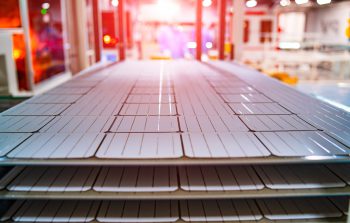Trade and Supply Chain Barriers Delay Impact of Historic Clean Energy Law
Project delays cause Q3 solar installations to decline 17% from previous year
WASHINGTON, D.C. and HOUSTON, TX — The U.S. added 4.6 gigawatts (GW) of new solar capacity in Q3 2022, a 17% decrease from the same quarter last year as trade barriers and ongoing supply chain constraints continue to slow America’s clean energy progress. These disruptions will cause a 23% decline in solar installations this year compared to 2021, according to the U.S. Solar Market Insight Q4 2022 report released today by the Solar Energy Industries Association (SEIA) and Wood Mackenzie, a Verisk business.
Wood Mackenzie said detainments under the Uyghur Forced Labor Prevention Act (UFLPA) are depressing near-term solar installation forecasts and delaying the impact of the Inflation Reduction Act (IRA). The U.S. Department of Commerce’s recent decision to apply anti-circumvention tariffs on solar products from Southeast Asia presents downside risk to future solar deployment.
“America’s clean energy economy is being hindered by its own trade actions,” said SEIA president and CEO Abigail Ross Hopper. “The solar and storage industry is acting decisively to build an ethical supply chain, but unnecessary supply bottlenecks and trade restrictions are preventing manufacturers from getting the equipment they need to invest in U.S. facilities. In the aftermath of the Inflation Reduction Act (IRA), we cannot afford to waste time tinkering with trade laws as the climate threat looms.”
As a result of supply constraints, the utility-scale, commercial and community solar markets all experienced quarter-over-quarter declines in Q3. The residential solar segment is less directly impacted by existing trade issues and saw 1.57 GW of new installations, marking a 43% increase over Q3 2021.
“Installations this year were significantly depressed due to supply chain constraints” said Michelle Davis, principal analyst and lead author of the report. “It has proven more difficult and time-consuming to provide the proper evidence to comply with the UFLPA, further delaying equipment delivery to the U.S.”
Forecasts from Wood Mackenzie find that the UFLPA will limit solar deployment through 2023 and mute the impact of the IRA in the near term. The report forecasts the utility-scale solar market to add 10.3 GW of new capacity in 2022, representing a 40% drop from 2021 volumes. By 2024, IRA-fueled growth will begin in earnest, with annual solar growth averaging 21% between 2023-2027.
Even as supply chain constraints slowed the market, solar accounted for 45% of all new electric generating capacity additions through Q3 2022, the most of any electricity source.
Learn more at seia.org/smi.
###
About SEIA®:
The Solar Energy Industries Association® (SEIA) is leading the transformation to a clean energy economy, creating the framework for solar to achieve 30% of U.S. electricity generation by 2030. SEIA works with its 1,000 member companies and other strategic partners to fight for policies that create jobs in every community and shape fair market rules that promote competition and the growth of reliable, low-cost solar power. Founded in 1974, SEIA is the national trade association for the solar and solar + storage industries, building a comprehensive vision for the Solar+ Decade through research, education and advocacy. Visit SEIA online at www.seia.org and follow @SEIA on Twitter, LinkedIn and Instagram.
Media Contact:
Morgan Lyons, SEIA’s Director of Communications, mlyons@seia.org (202) 556-2872
Jen Bristol, SEIA’s Senior Director of Communications, jbristol@seia.org (202) 556-2886


